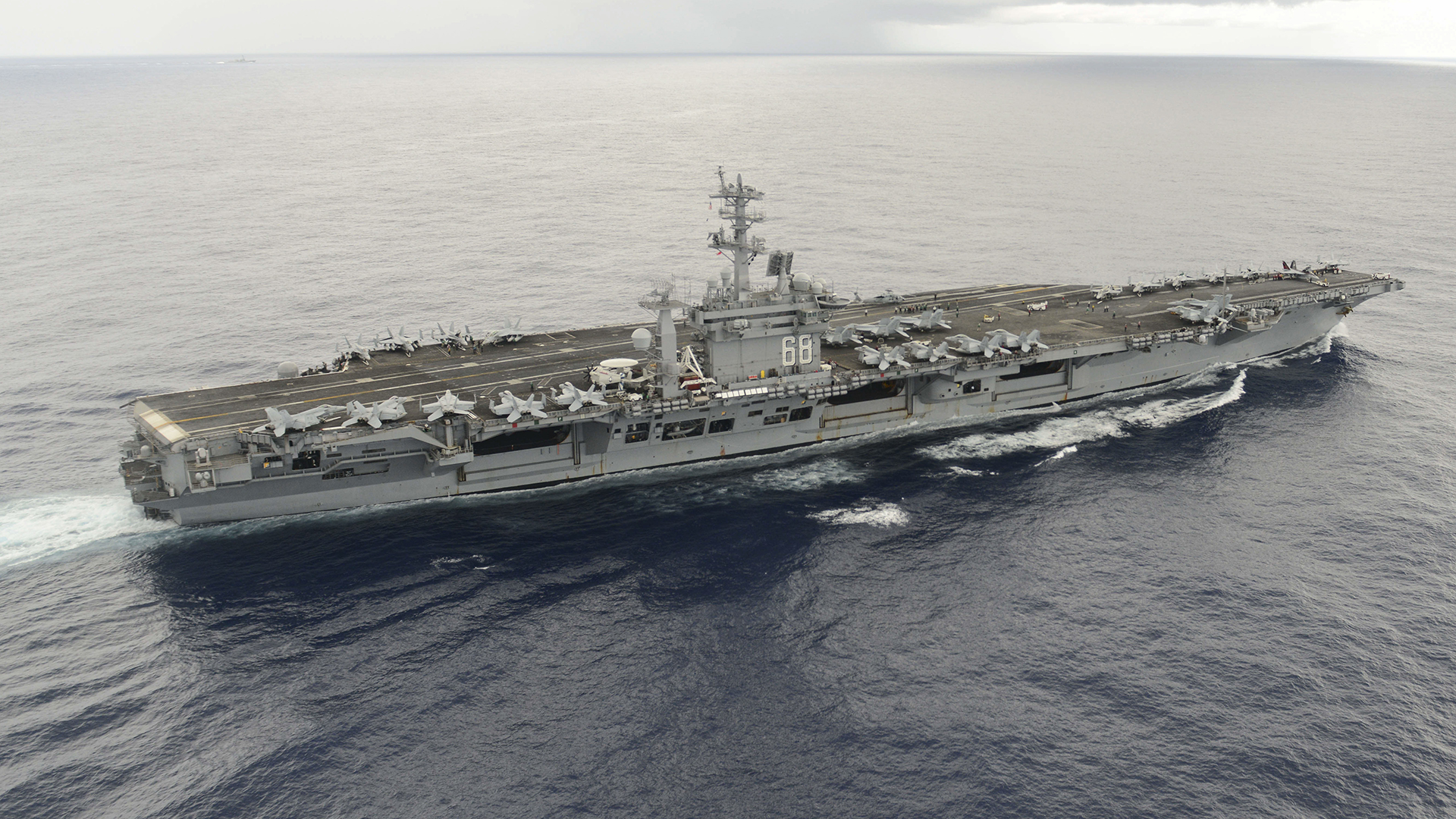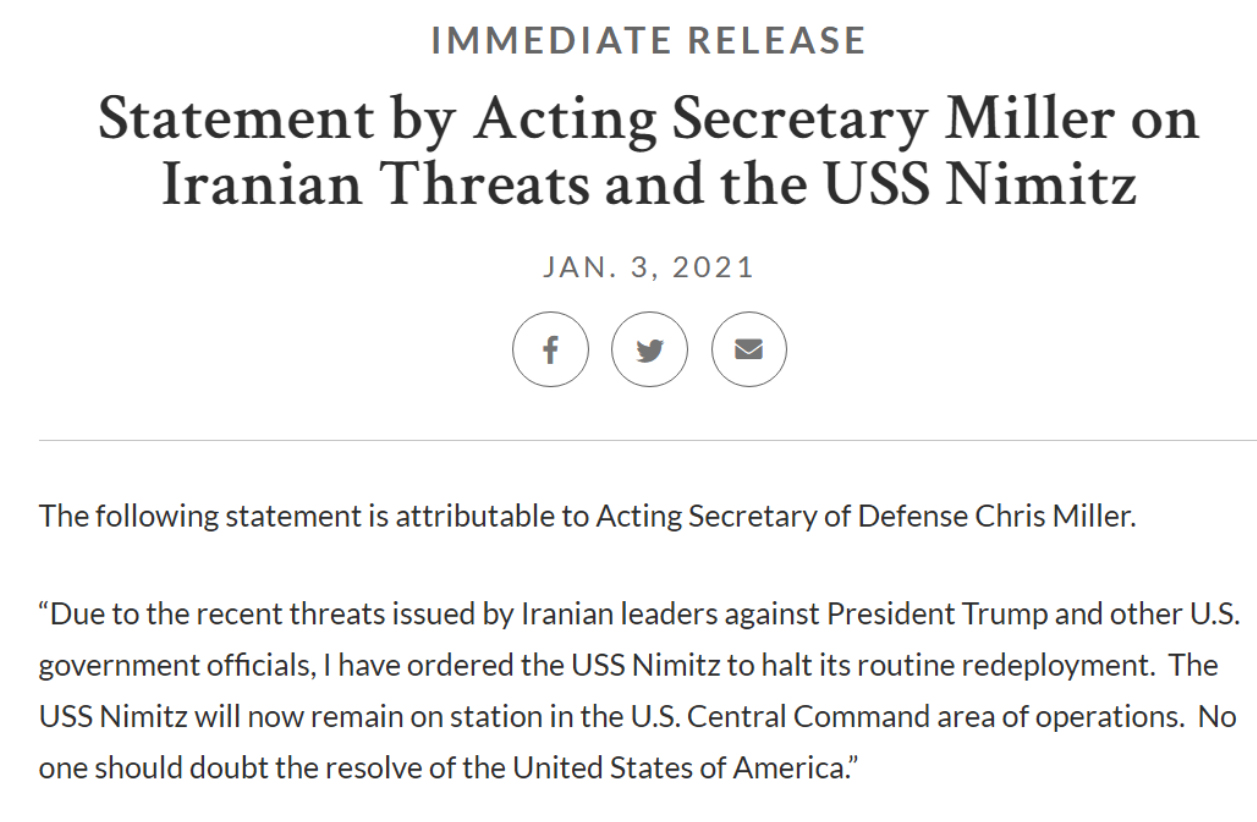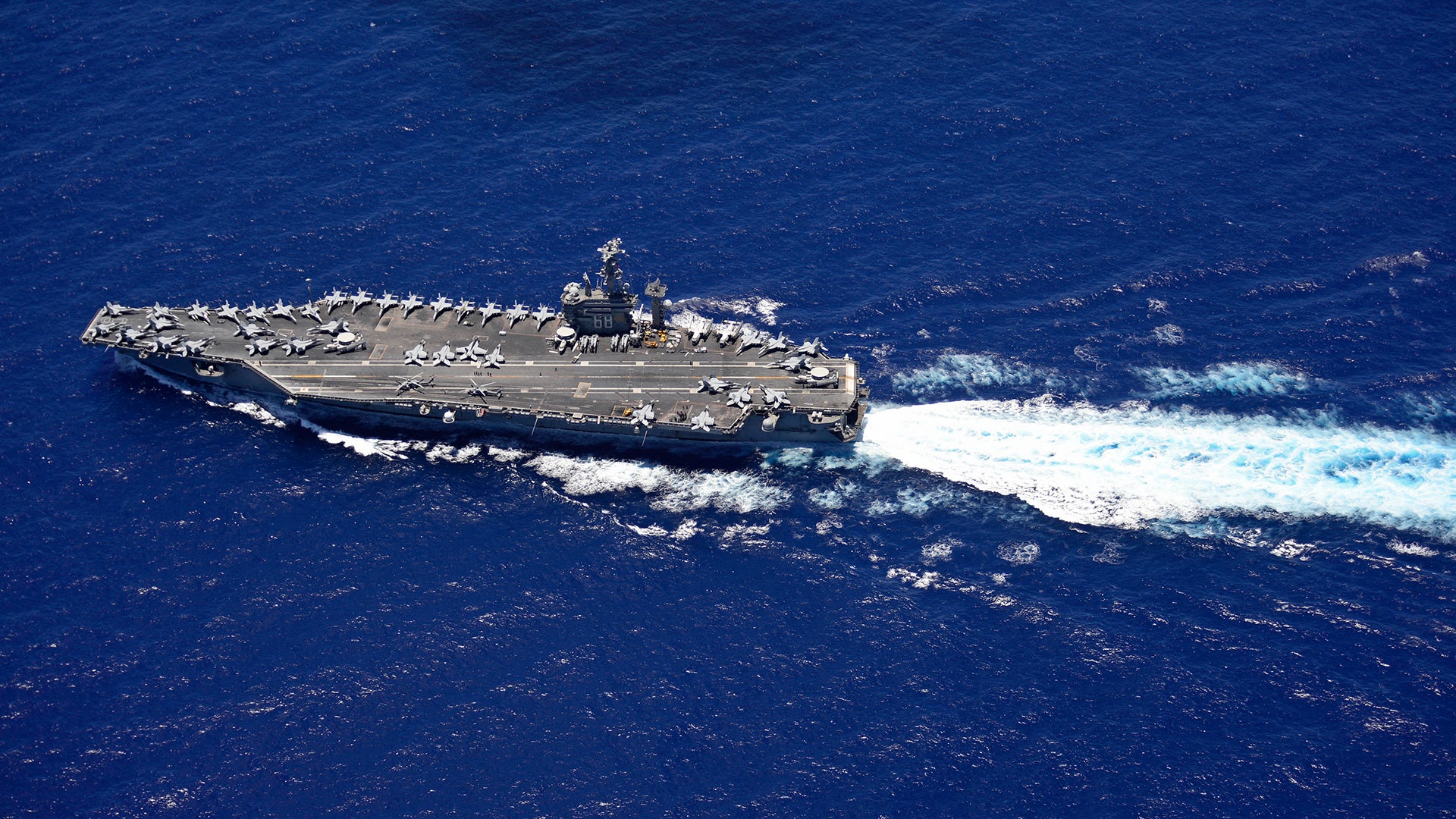Just two days after the Acting Secretary of Defense Christopher Miller had ordered the supercarrier, USS Nimitz, to head home as a “de-esclatory” gesture toward Iran, the order has been rescinded and the Nimitz Carrier Strike Group is now set to remain in the Middle East until further notice.
The carrier had been operating off the coast of Somalia as part of the ongoing operation dubbed “Octave Quartz” aimed at pulling U.S. troops out of that country and redistributing some of them elsewhere in Northern Africa. The ship has been deployed for an arduous ten months, which has been especially challenging due to the ongoing COVID-19 Pandemic. The return to Bremerton, Washington was seemingly overdue, but that is now put on hold in order to counter potential Iranian hostilities, or even possibly take part in an operation against that country should President Donald Trump give the order to execute one.


The nuclear-powered guided-missile submarine USS Georgia, a vessel packed with Tomahawk cruise missiles and special operations forces, made a very rare high-profile transit into the Persian Gulf on December 21st, seemingly to offset the absence of a carrier group there due to Nimitz’s tasking off the Horn of Africa. Still, it is very unlikely that a carrier strike group would choose to be in the Persian Gulf should a conflict with Iran erupt. The relatively small and nearly land-locked body of water is a super anti-ship missile engagement zone and is rife with other threats that are hard to counter, including the potential small-boat swarm attacks, naval mines, and non-traditional submarine operations.
Concerns about the possibility of attacks from Iranian proxies, or even Iran itself, have been steadily growing ahead of the first anniversary of the death of Qassem Soleimani. A U.S. military drone strike killed Soleimani, the then-commander of Iran’s Quds Force, the portion of the country’s powerful Islamic Revolutionary Guard Corps (IRGC), outside of Iraq’s Baghdad International Airport on Jan. 3, 2020. Abu Mahdi Al Muhandis, then-head of Kata’ib Hezbollah, one of Iraq’s most prominent Iranian-backed militias, also died in the strike.
Just last week, there were reports that the U.S. intelligence community had assessed that Iranian military units, including air defense and maritime elements, had gone on high alert. However, it was unclear if those actions had been taken in order to be prepared for possible American retaliation to attacks from Iranian or Iranian-backed forces or in response to U.S. threats, real or imagined.
Earlier in December, many senior Iranian officials, including Iran’s Supreme Leader Ayatollah Ali Khamenei and the country’s President Hassan Rouhani, the latter of whom typically represents a more moderate voice in Iranian politics, had already threatened revenge over Soleimani’s death. This kind of fiery rhetoric from Iranian officials immediately continued into the new year.
“Do not presume that someone, as the president of America, who appeared as a murderer or ordered a murder, may be immune from justice being carried out. Never,” Ebrahim Raisi, Chief Justice of Iran, said on New Year’s Day. “Those who had a role in this assassination and crime will not be safe on Earth.”
“It’s even possible that there are people inside your home [the United States] that will respond to your crime,” Esmail Ghaani, who became head of the Quds Force after Soleimani’s death, said at the same event.
Pro-Iranian militant groups across the Middle East have also made similar calls for justice and threats over the deaths of Soleimani and Al Muhandis. In Iraq, specifically, a major rally took place today in Baghdad’s Tahrir Square to mark the anniversary and protest the American government. “No, no to America!” shouted some in the largely mask-less crowd. “You killed our guest. There is no place here for your embassy,” some of the banners read according to The Washington Post.
In recent weeks, there has also been a notable spike in tensions between Iranian-backed militias and U.S. forces, as well as the Iraqi government. Iraqi Prime Minister Mustapha Al Kadhimi has been facing increasing criticism and threats from those groups over arrests of militants on charges of being responsible for recent rocket attacks aimed at the U.S. Embassy in Baghdad.
Some Iranian-backed groups in Iraq have also been claiming attacks on locally-operated supply convoys supporting the U.S.-led coalition fighting ISIS in the country, as well.
We have to stress that this abrupt move is not necessarily a prelude to war. Keeping the carrier strike group in the area even for a relatively short period of time accomplishes two things. First it provides a highly visible deterrent signal to Tehran. Second, it gives commanders more assets to leverage should a kinetic operation kick-off, one that is not tied to fixed runways that are all vulnerable to Iran’s numerous ballistic missile forces.
We will continue to update this post with more information as it comes available.
UPDATE: 1/4/21
CNN
has now reported that the decision to send the USS Nimitz back to the Middle East came from President Donald Trump himself. That same report said that officials at U.S. Central Command had also disagreed with Acting Secretary of Defense Chris Miller’s idea of sending the carrier home to try to de-escalate tensions with Iran.
The Pentagon’s announcement of the new plans for Nimitz did ultimately come a day before Iran’s Islamic Revolutionary Guard Corps seized a South Korean-flagged tanker, which you can read about in this new War Zone piece.
Contact the author: Tyler@thedrive.com
